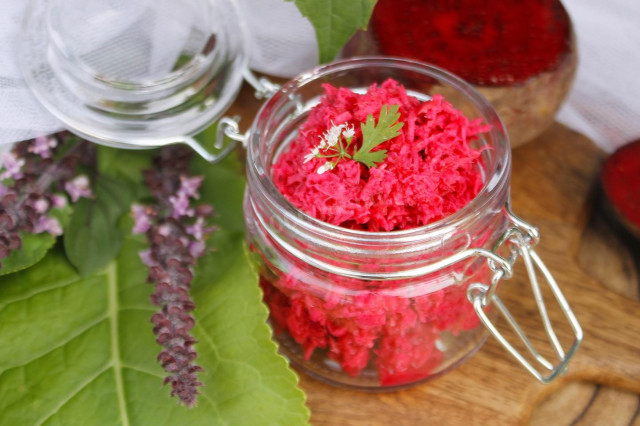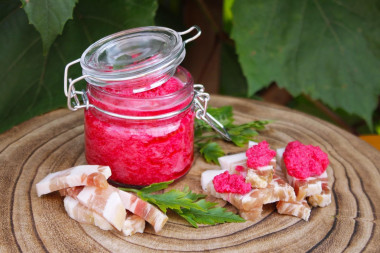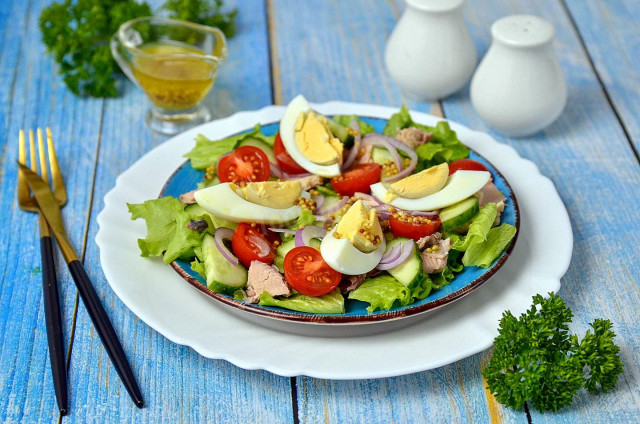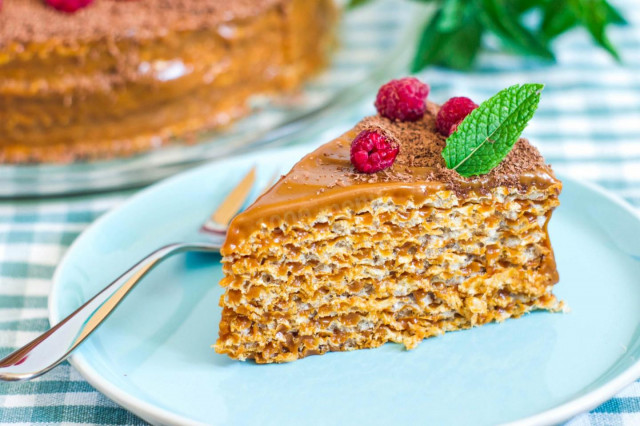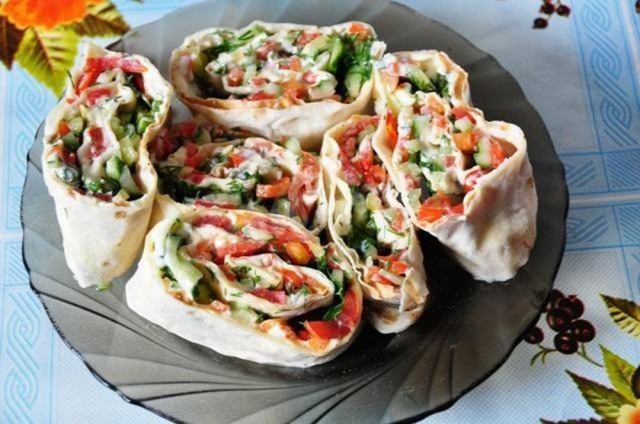Composition / ingredients
Step-by-step cooking
Step 1:
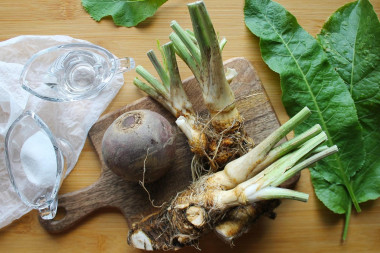
How to make horseradish sauce? Prepare all the products. Soak the horseradish in cold water for a few hours. Why do I need to do this? With prolonged storage in the refrigerator or on store shelves, the roots become a little sluggish. To make them elastic again, and further processing is easier, horseradish needs to be soaked in water. If you have roots from the garden, freshly dug, then this procedure can be missed.
Step 2:
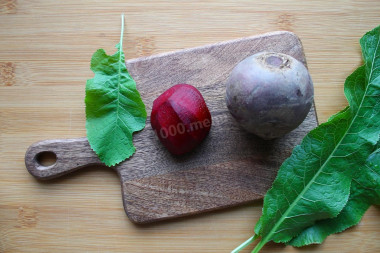
Peel the beetroot and rinse it under running water. The amount of beetroot can be slightly increased or vice versa reduced according to your taste and desire. If you take a little more beetroot, the color of the sauce will be more saturated, and the taste is softer.
Step 3:

Peel the horseradish roots with a sharp thin knife.
Step 4:
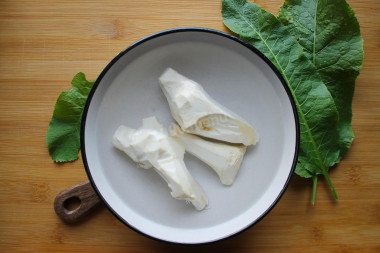
Rinse them well in clean water. Next, you need to chop the horseradish root and beetroot. You can do this in three ways that are convenient for you: using a meat grinder, a blender, or using a grater. In a blender, a more mushy mass will turn out, and if you use a grater or a meat grinder, then pieces of horseradish and beetroot will be clearly felt in the sauce.
Step 5:
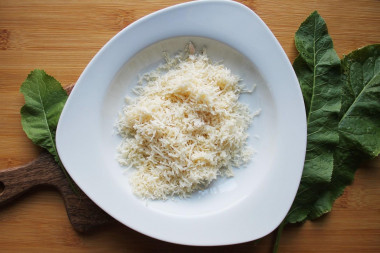
So, chop the root. I do it outdoors (on the balcony, terrace) or at the window, because horseradish irritates the mucous membrane of the eyes.
Step 6:
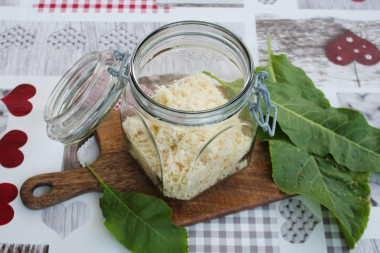
Put the horseradish in a jar and cover it with a lid, or send it to a cup and cover it with a cellophane bag.
Step 7:
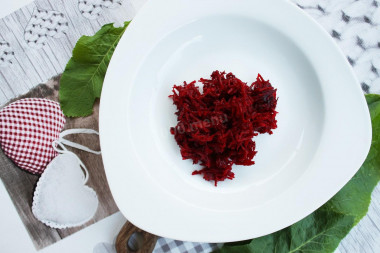
Chop the beets.
Step 8:
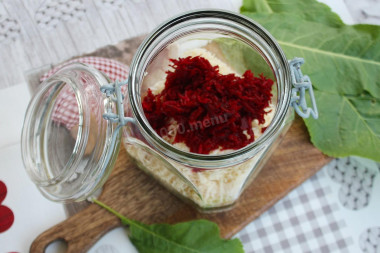
Send her to hell.
Step 9:
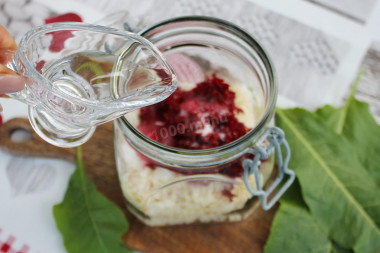
Add salt, sugar and vinegar to the jar.
Step 10:

Pour in cold boiled water (adjust the amount as desired, I added a little more than stated in the recipe). Mix everything thoroughly, try if there is enough salt, sugar and vinegar. If something is missing according to your taste, add the missing component, mix everything again.
Step 11:

Send a jar of sauce to the refrigerator to infuse for several hours, or even better overnight. The longer the sauce is infused, the tastier it will become.
Step 12:

Done, you can taste! This is how the sauce looks, passed through a meat grinder or cooked with a fine grater.
Step 13:

And this is how the sauce looks, crushed with a blender.
For the recipe, you can take boiled beets. Then the taste of the finished seasoning will become even softer.
As practice has shown, the sauce prepared with a meat grinder or grater turns out to be more vigorous and sharp than twisted in a blender.
I serve this delicacy to jelly, salted bacon, meat and potato dishes, as well as to fish.
Bon appetit!
Caloric content of the products possible in the composition of the dish
- Beetroot - 40 kcal/100g
- Dried beetroot - 278 kcal/100g
- Boiled beetroot - 49 kcal/100g
- Granulated sugar - 398 kcal/100g
- Sugar - 398 kcal/100g
- Wine vinegar (3%) - 9 kcal/100g
- Vinegar 9% - 11 kcal/100g
- Balsamic vinegar - 88 kcal/100g
- Apple vinegar - 14 kcal/100g
- Vinegar - 11 kcal/100g
- Salt - 0 kcal/100g
- Water - 0 kcal/100g
- Horseradish Root - 59 kcal/100g

